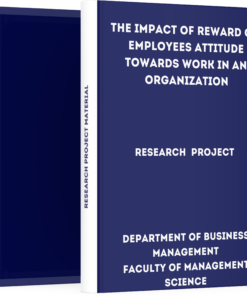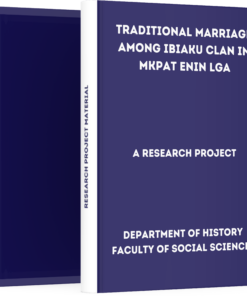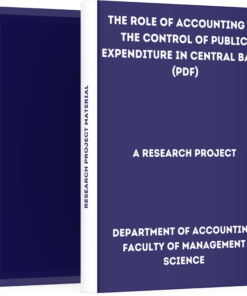Aestivation Induction and Evidence of Conformational Differences Between Oxy-haemocyanin and Deoxyhaemocyaninin Aestivating and Non-aestivating Snails
₦3,000.00
If you are interested in getting this project material “Aestivation Induction and Evidence of Conformational Differences Between Oxy-haemocyanin and Deoxyhaemocyaninin Aestivating and Non-aestivating Snails”, click on the DOWNLOAD BUTTON to make payment and the file will be delivered to your email immediately after confirmation.
Description
Download Aestivation Induction and Evidence of Conformational Differences Between Oxy-haemocyanin and Deoxyhaemocyaninin Aestivating and Non-aestivating Snails. Biochemistry students who are writing their projects can get this material to aid their research work.
Abstract
Haemocyanin is a high molecular weight, dioxygen, transport, copper-glycoprotein with a dicopper active site found in the haemolymph of several marines and terrestrial invertebrates belonging to the phyla Mollusca and Arthropoda.
Haemocyanin exists in two distinct conformers: The T-conformer (Tense) and the R-conformer (Relaxed). Knowledge of the molecular architecture around the copper atoms in the active site of haemocyanin is important in understanding how these proteins reversibly bind oxygen.
Induction of aestivation and the evidence of conformational differences between oxy-haemocyanin and deoxy-haemocyanin in aestivating and non-aestivating snails were studied.
Aestivation induction was studied by treating five groups of snails (groups A, B, C, D and E) with respective volumes of oxy-haemocyanin from aestivating snails, respective volumes of oxy-haemocyanin from non-aestivating snails and respective volumes of distilled water.
Evidence of conformational differences between oxyhaemocyanin and deoxy-haemocyanin was also studied by treating the haemolymph of two snail samples (Snail 1 and Snail 2) with nitrogen gas.
Introduction
Mollusca is the second largest phylum of the animal kingdom, forming a major part of the world fauna. The Gastropoda is the only class of molluscs that have successfully invaded the land.
They are one of the most diverse groups of animals, both in shape and habit. Among gastropods, land snails (subclass: Pulmonata) are one of the most numerous with almost 35,000 described species of the world.
The Phylum Mollusca is probably the third most important animal group after the arthropods and vertebrates (South, 1992). Snails and slugs belong to the class Gastropoda.
They are molluscs, a group of invertebrates with soft unsegmented bodies. Slugs are often described as snails without a shell, while snail bodies are enclosed in calcareous shells (Barker, 2001; Ramzy, 2009).
The terrestrial Mollusca including snails and slugs are destructive agricultural pests causing economic damage to a wide variety of plants including horticulture, field crops, and forestry.
How to Download this Project Material
First, note that we are one of the best and most reliable online platforms because we don’t retain any of your personal information or data as regards making payments online.
PRICE: ₦3,500 ₦3,000 (Three Thousand Naira Only)
Make a bank deposit or mobile transfer of ₦2,000 only to the account given below;
Bank Name: UBA
Account Number: 1022564031
Account Name: TMLT PRO SERVICES
After making the payment, CLICK HERE to send the following on WhatsApp;
- Depositor’s Name or Screenshot of Payment
- Name of the Past Question
- Active Email Address
or Call Us On +2348082284439
Once your details have been received and your payment confirmed by us, you will receive the past question in your email or WhatsApp within 5 Minutes.
Guarantee of Getting the Material
We understand that due to the high rate of fraud, many people are afraid of making purchases online but be rest assured that PastExamQuestions will deliver your material after payment.
Once your details have been received and your payment confirmed by us, you will receive the past question in your email or WhatsApp.
Give us Feedback
Have we been able to satisfy you? How well do you think the material will be helpful after having gone through it? Does the price worth the material? Let’s hear from you!
We recommend that our customers give feedback at the end of every transaction to enable us to serve better. You can do this by clicking the review button on this page.
Where is the review button? >> Just scroll up to where you see reviews





Reviews
There are no reviews yet.